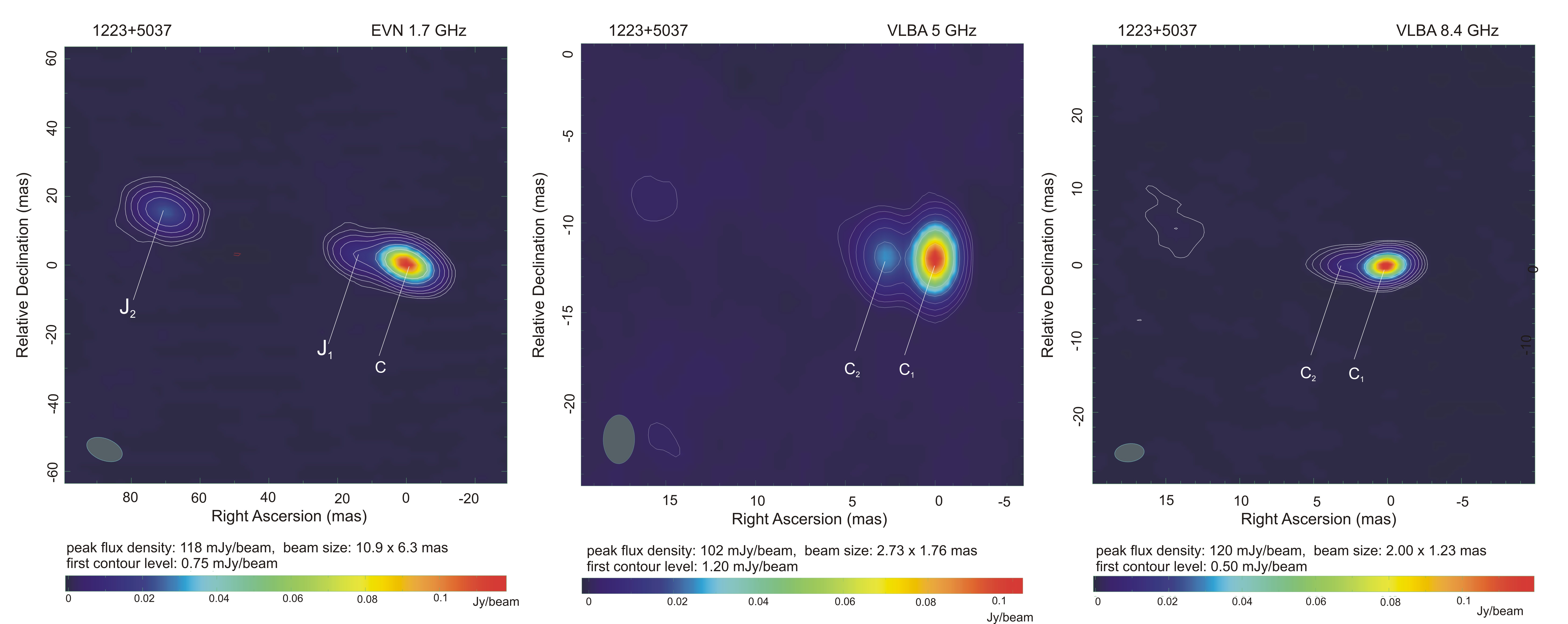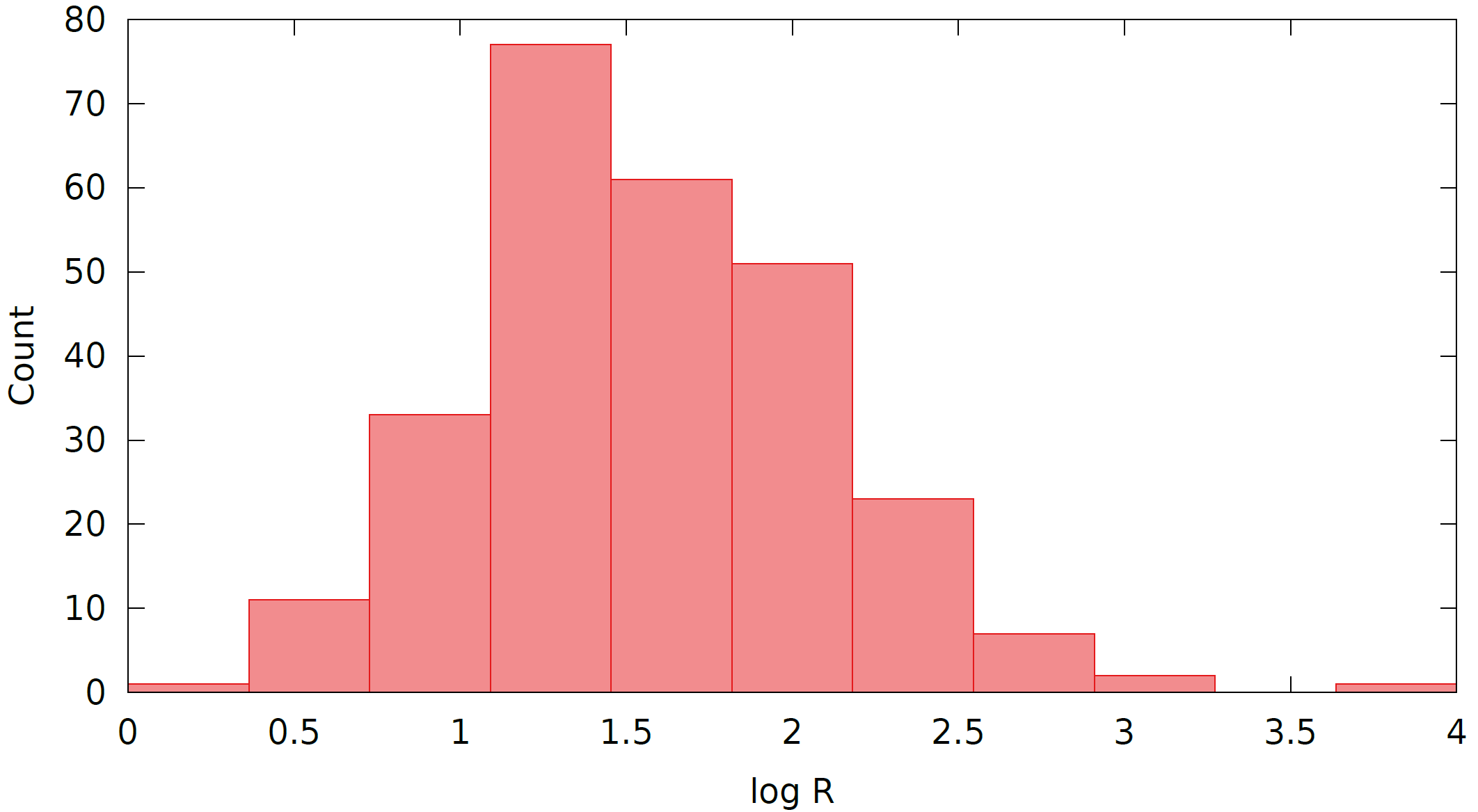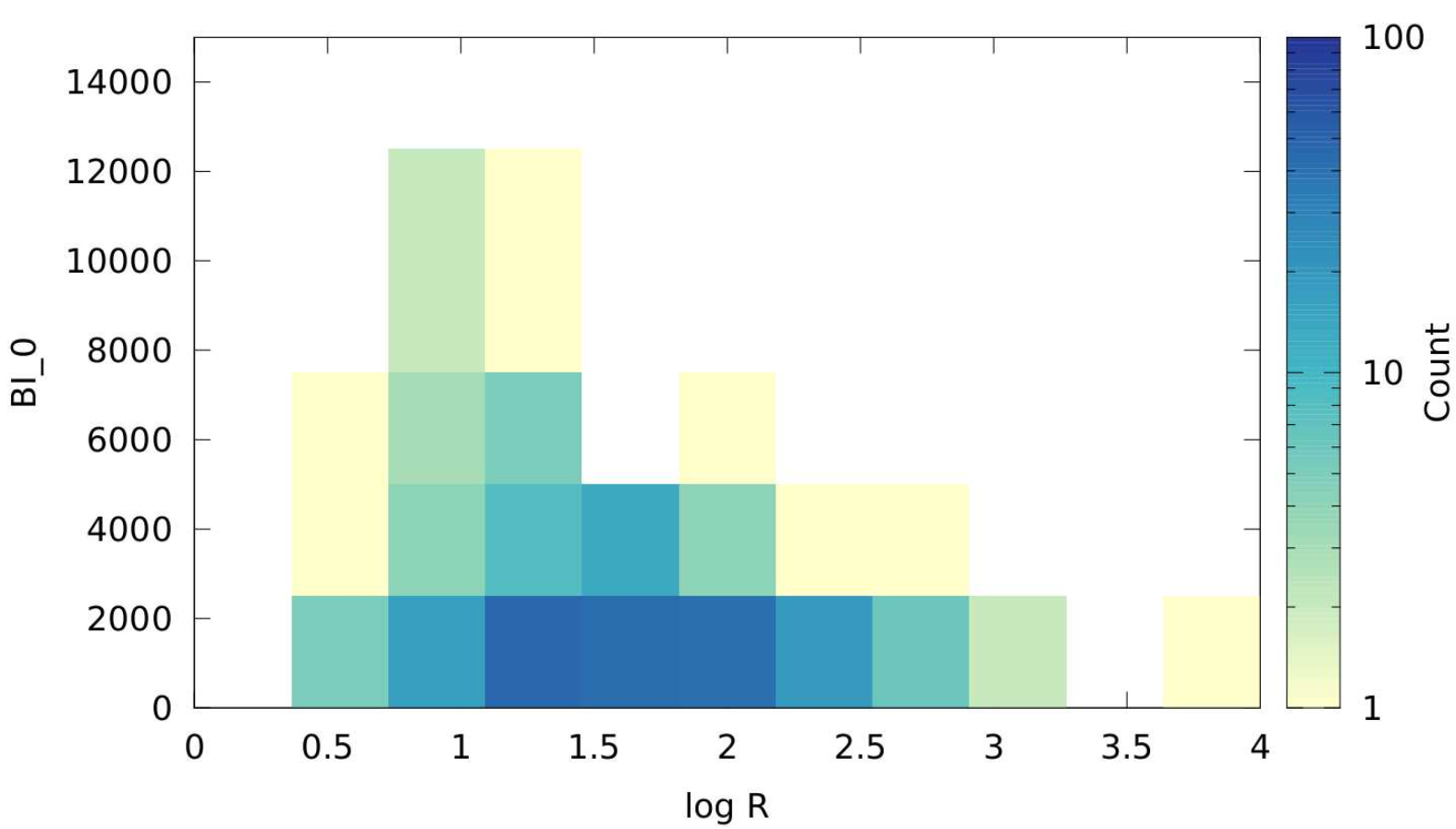|
Jets and outflows are two main powerful processes transporting material out
of the active
galactic nuclei (AGN). Both are important feedback processes which means
that they can efficiently
interact with the surrounding medium or even self-regulate the growth of the
supermassive black
hole. Outflows are moving outward at lower speeds than jets but they can
carry thousands of times
more mass flux per unit of kinetic luminosity than collimated relativistic
jets observed in 10% of
all AGNs. We can observe them indirectly as blueshifted Broad Absorption
Lines (BALs)
in quasar spectrum. However, only about 15% of the whole population of
quasars shows BALs in their
spectra. This could be explained by the quasar unification scheme in which
outflows are present
in every quasar but appear as BALs in the spectrum only if they are seen
under specific inclination.
Another explanation, which emerged with the discovery of radio-loud BAL
quasars, suggests
that absorption lines are only present in the early evolution phase of
quasars.
Discovery of the existence of radio-loud BAL quasars gave us another
opportunity to study
the BAL phenomenon, this time on the basis of radio emission. The radio
emission is an additional
tool to understand their orientation and age by the VLBI imaging (detection
of radio jets and their
direction, size determination), the radio-loudness parameter distribution
and variability study. The
studies of the radio properties carried out by us on the sample of compact
radio-loud BAL quasars
brought some clues on the BAL phenomenon.
We performed multi-frequency high resolution radio observations of a sample
of BAL quasars
with EVN at 1.7 GHz and with VLBA at 5 and 8.4 GHz. Most of the sources were
resolved
showing, typical for radio-loud quasars, core-jet morphology. Their high
radio luminosities and
small linear sizes (less than 6 kpc) indicate they are strong young AGNs
(Fig.1).

Fig.1:
Quasar 1223+5037 observed with EVN at 1.7 GHz and VLBA at 5 and 8.5 GHz.
Contours increase by a
factor 2, and the first contour level corresponds to 3σ. J1 and
J2
indicate parts of a radio jet. C indicates a radio core resolved at higher
frequencies into two components.
We
then used the largest available
sample of BAL quasars to study the relationships between the radio and
optical properties in these
objects. We found that the stronger absorption is connected with the lower
values of the radio-
loudness parameter, log R , and thus probably with larger viewing angles.
Therefore, the orientation
is an important parameter that affects the amount of the measured
absorption. Nevertheless the
lack of correlation between the value of absorption and parameter R suggest
that some additional
factors may be significant here, e.g. weak radio emission.


Fig.1:
(Left) The distribution of radio-loudness parameter log R
for the studied sample
of radio-loud BALQSOs selected from Gibson et al.(2009).
(Right)
Radio-loudness vs. the value of modified balnicity index
BI0 for the same sample of radio-loud BALQSOs.
Acknowledgments
This work was supported by the National Scientific Centre under grant
DEC-2011/01/D/ST9/00378.
The research leading to these results has received funding from the European
Commission Seventh Framework Programme (FP/2007-2013) under grant agreement
No 283393 (RadioNet3).
The European VLBI Network is a joint facility of European, Chinese,
South African and other radio astronomy institutes funded by their national
research councils.
The National Radio Astronomy Observatory is a facility of the National
Science Foundation
operated under cooperative agreement by Associated Universities, Inc.
The research described in this paper makes use of Filtergraph, an online
data visualization tool developed at Vanderbilt University through the Vanderbilt
Initiative in Data-intensive Astrophysics (VIDA).
|
|
 cv publications
projects
cv publications
projects


